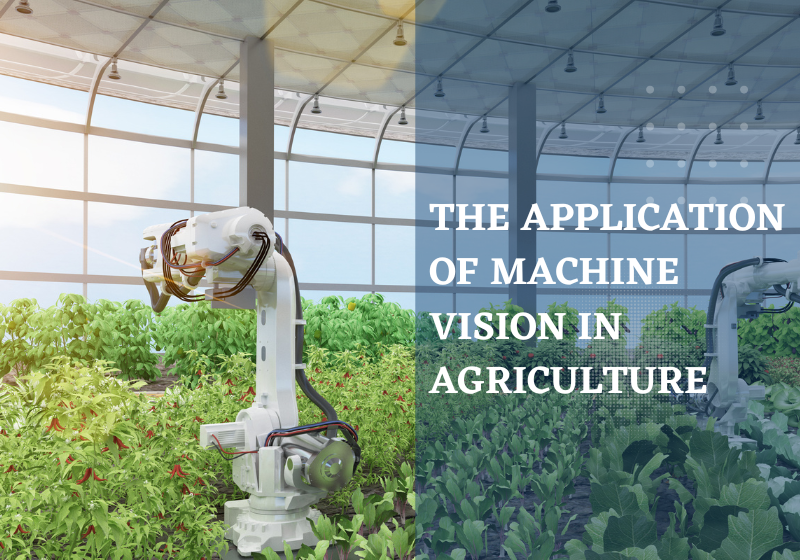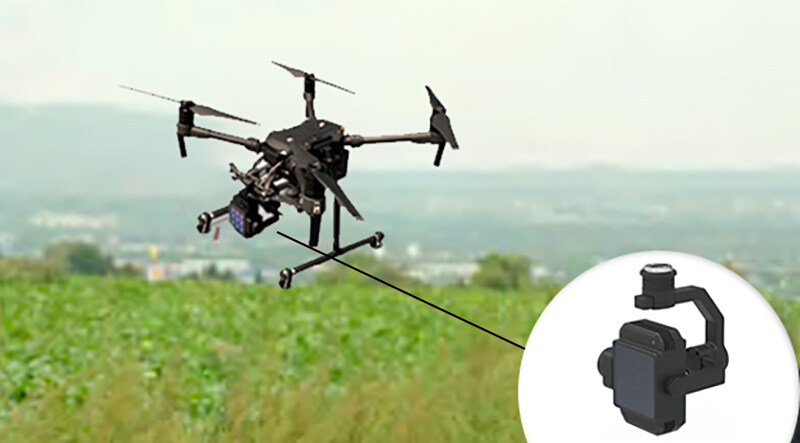


Machine vision is a set of equipment that acquires needed information and controls collaborative robots by automatically accept and process the images of actual objects. Normally, a set of machine vision equipment consists of light sources, industrial cameras, lens, industrial computers and software. When it comes to machine vision application, the most common thing that comes into mind is assembly lines in factories. That, in deed, is correct. However, machine vision can benefit agriculture just as much as those in industrial environment. One of the key impacts is that machine vision is able to automatically finish time-consuming and labor-intensive tasks.
Machine vision can not only be used for visible light imaging, but also perform well in imaging detection that is not visible to the naked eye, such as near-infrared, ultraviolet, and X-rays. This means that machine vision can contribute to soil detection, crop content detection, and extract key parameters such as food additives, Sudan red, melamine, aflatoxin, and more. This approach helps solve some common problems in planting that are not detectable by the naked eye.
Machine vision in the process of farming
Machine vision can assist farming organizations and indivisual famers in the whole process of crop growth, irrigation, harvesting, packaging and transportation.
When it comes to content detection, hyperspectral cameras can come to in handy. It is a type of camera that can perform spectral detection that is not visible to the naked eye. Its principle can be simply understood as emitting light waves to the detected object. Since different objects absorb and reflect different light, the hyperspectral camera can further analyze the reflected waveband when receiving it, so as to detect the content of certain substances in crops. Common material detection can be: water content, potassium content, phosphorus content, etc., which are used to detect whether crops are chlorosis, bitter pit, and even damage to the structure and balance of nutrient in the soil which may be the one of the causes of water pollution and other issues that farming organizations and indivisual famers often need to worry about.
By a means of image acquisition, equipment execution and software analysis, efficient fertilization and irrigation is no longer an issue for farming organizations or individual farmers.
Firstly, industrial camera will collect the images, and then industrial computers organize the acquired images by connecting to the devices. Finally, a well-written software can conduct further analysis. Real-time tracking of soil moisture content through machine learning techniques in agricultural environments, to know exactly when to provide water to crops and how to rationally conserve water consumption, is of great significance in today's water shortages.

Through machine learning, 3D stereo cameras are used to judge and classify whether the crops are ripe and their health status, and then detect the best cutting point for harvesting using collaborative robotic arms, grippers, and AGV trolleys for the process.
This requires the cooperation of a complete set of machine vision equipment and collaborative robotic arms. First of all, the LED light source and 3D stereo camera mounted on the machine collect the information of color and corresponding distance of the tested fruits and vegetables according to the wavelength reflected by the illuminated object, so as to detect the maturity of the crops. Through a short period of machine learning, the industrial computer connected to the 3D stereo camera can successfully determine the maturity of the crops and issue instructions to the robotic arm whether to pick or not. If so, the robotic arm will pick the crops by adopting the gripper after being instructed.
Smart manufacturing uses collaborative robotic arms and grippers for packaging. In the process of transportation, the cooperation of barcode readers can be used to scan barcodes in large quantities and then the industrial computer is able to analysis the data which can be entered the storage system. Independent one-dimensional/two-dimensional codes to mark each batch or even each agricultural product can make sure every single product is traceable. The information on the code can accurately trace the source of a certain batch of products when the information is required.
Through images, the system can analyze the size, shape and damage of crops such as fruits and vegetables for further classification, analyze the sweetness of products according to color and wavelength of collected images for tracking the origin and traceability. The near-infrared spectroscopy camera with an industrial camera can gather the sweetness of fruits and vegetables through the wavelength range, and the spectrum acquisition can also detect some possible and common problems of crops such as internal browning and sugar cores.
Strengths of smart farming
Farming has been in our history for hundreds of years on end. With the era called Factory 4.0, farming can be smarter and more efficient due to the development of technology. Compared with traditional farming, machines can help the industry soar in the following aspects:
Conclusion
The application of machine vision in agriculture can control the whole process of soil detection, efficient irrigation, component content detection, picking, packaging and transportation. While further improving efficiency, it can find problems in agricultural production in time to help solve problems that are a headache for farming organizations and indivisual famers. Thus to achieve a smarter farming future.
Here we recommend SmartMoreInside’s product for the equipment might help farming. All those mentioned products can be found here. If you’re interested, don’t hesitate to contact us for more information.
Email format error
Email cannot be empty
Email already exists
6-20 characters(letters plus numbers only)
The password is inconsistent
Email format error
Email cannot be empty
Email does not exist
6-20 characters(letters plus numbers only)
The password is inconsistent